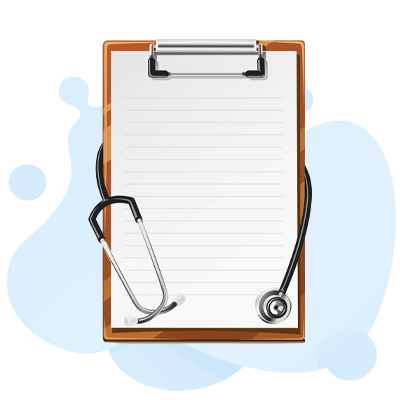The ABIM Test 2025

The ABIM Test 2025 is one of the most challenging exams that physicians face during their careers. It is a computer-based exam that consists of four testing sessions and may include up to 240 multiple choice questions.
The American Board of Internal Medicine 2025 (ABIM) offers a variety of resources to help you prepare for the ABIM Test. These include exam blueprints that outline approximate content percentages and tutorials on how to use the exam interface.
Free ABIM Practice Test Online
ABIM Test Questions and Answers
Each exam session may have up to 60 multiple-choice questions and is administered in a modular fashion. Exam duration: Each session may take up to two hours to complete.
One of the most challenging examinations a doctor will ever take is the ABIM one. A wide range of topics in Internal Medicine are covered by the 240 case-based, single-best-answer multiple-choice questions.
The Internal Medicine MOC exam takes about ten hours to complete. A maximum of 60 multiple-choice questions may be asked throughout each of the day’s sessions.
The 150 hours of total study time ought to be plenty. Cramming is far less effective for long-term retention than learning in brief bursts over time and repeatedly assessing yourself on what you’ve learnt.
4 blocks of 60 questions each contain a total of 240 questions. You have up to 2 hours to finish each block of questions, according the ABIM website.
You will need to present two forms of identification on the exam day, including a photo ID and your signature. A legitimate credit card, ATM card, or Social Security card might serve as the second form of identification. Your ID’s name must coincide with the name on file with the ABIM.
Go to your Physician Portal’s My Assessments page. Next to the test you want to take, click the green “Register” button. Finish the registration procedures. You will be sent to Pearson VUE’s website to make your appointment once you have finished the registration process.
Cell phones, pagers, watches, purses, and wallets are not permitted in the testing area. In the locker, which you may access during breaks, are also snacks and beverages. Sweaters are permissible in the testing room, but outerwear like jackets and coats are not.
Unless a test center administrator gives you permission to leave during an exam session, you must stay in your seat the entire time.
ABIM Test Format
The ABIM Test is a rigorous exam that tests diagnostic reasoning and clinical judgment. It is administered by the American Board of Internal Medicine.
The test format is a computer-based examination that consists of four testing sessions. Each session contains up to 60 multiple-choice questions.
There is no guessing penalty and the score is reported on a pass or fail basis. Each exam session has two hours of testing.
It takes approximately ten hours to complete the exam, including orientation and breaks. Security in each testing center is multilayered and includes palm-vein scanners, biometric identification, photo ID, and continuous recording devices.
During the exam, you are not allowed to bring your own personal items into the test room. This means cell phones, watches, wallets, study materials or papers, tobacco, food, and drinks must be placed in the test center locker.
There are several ABIM question banks that are available to help you prepare for the ABIM test. They vary in the way they approach questions and explanations but are aimed at the content you need to know for the ABIM exam. Some are geared towards Step 1 like MKSAP, others are more in-depth like UWorld.
ABIM Practice Test
The ABIM test is a computer-based exam that is administered in testing centers across the United States. These tests measure knowledge and skills in a variety of specialty areas. These include internal medicine, adolescent medicine, advanced heart failure and transplant cardiology, allergy and immunology, cardiovascular disease, clinical cardiac electrophysiology, critical care medicine, endocrinology, diabetes, and metabolism, gastroenterology, geriatric medicine, hematology, hospice and palliative medicine, infectious disease, interventional cardiology, medical oncology, nephrology, pulmonary disease, and sports medicine.
The exam is broken into multiple-choice sessions that are typically two hours long and may contain up to sixty questions. There are also a number of break points between sessions.
One of the most important things to remember when studying for an ABIM exam is that you need to take plenty of practice tests. These will help you to identify your strengths and weaknesses so that you can develop a stronger study strategy.
There are several different sources of ABIM exam practice questions, including the MKSAP and UWorld question banks. These resources have questions that are aligned with the ABIM blueprint and are full of comprehensive answer explanations.

ABIM Test Dates
The ABIM Test is a multiple-choice exam with patient-based case questions. It also has a few shorter questions that focus on specific knowledge points.
The exam is made up of four sessions, each lasting two hours. You are allowed 100 minutes of break time between each session.
You are required to bring two forms of identification: a government-issued ID with a photo, such as a driver’s license or passport; and a second form of ID that does not need a picture. The ABIM tests are administered at secure test centers that employ palm-vein scanners, wands, and cameras to verify your identity.
For more information on the ABIM Test, visit their website. They also have a helpful FAQ section that answers many of your questions.
ABIM also has strict refund policies for exams. Candidates can receive 70% of their fee back if they cancel their exam within 48 hours of their appointment date.
ABIM Self-Assessment Test
An ABIM Test is a certification exam that tests your knowledge and skill in a specific subject area. Physicians must pass this examination to become board certified in that specialty.
To help physicians prepare for the ABIM test, a number of educational sources offer useful practice exams that simulate the actual ABIM test environment. Some of these educational sources even offer a 30-minute, maintenance of certification (MOC) exam tutorial that will familiarize you with the testing method used by ABIM.
The ABIM Internal Medicine MOC exam is a two-part exam that takes approximately 3 hours to complete. It is comprised of 90 single-best-answer multiple-choice questions divided into two sessions.
Taking a self-assessment test can help you identify knowledge gaps in your practice and prepare for your next exam. The American College of Physicians’ (ACP) Medical Knowledge Self-Assessment Program(r) (MKSAP) offers well-researched content in 11 subspecialties and 1,200+ case-based, board-like questions.
MKSAP also includes a variety of study tools, including practice exams, custom quizzes, digital flashcards and Board Basics. All of these features can help you achieve your goal of passing the ABIM board exam and retaining your medical license.
ABIM Test Breakdown
There is no specific pass rate for the ABIM exam, since a number of examinee-specific factors can influence exam results. The ABIM exam is a multiple-choice test with 240 questions in four modules. It is designed as a diagnostic test that requires knowledge of cases and the ability to evaluate diagnoses. The ABIM exam uses “boards style” question format, which means the questions are designed as case-based presentations and require you to determine the correct answer. The exam is confidential, and candidates agree not to copy or reveal the content of any questions they are given. The exam is also protected by federal copyright and trade secret laws.
ABIM has a test simulator function on their website, which simulates the actual exam and allows you to cross out answers, highlight text, take notes, and access a calculator. This makes it easy to review the exam and practice the questions in advance of the exam. UWorld’s ABIM QBank is another great tool to help you prepare for the exam, as it provides explanations for each answer choice in addition to colorful illustrations to aid in recall and memorization.

ABIM Test Length
The ABIM test is a multiple choice computer administered assessment of your medical knowledge and abilities. In a nutshell, there are four modules of 60 questions each (240 in the big picture) spanning a total of eight hours. Among the many testing technologies and strategies, computer based tests have a number of merits for their time efficiency and reliability. The ABIM test can be a mind bender but is a rewarding experience when you are done. You will be awarded with a well deserved certificate of achievement. Luckily, the most important part of any successful test is a positive attitude and a commitment to your personal success.
ABIM Test Results
ABIM exams are constructed to assess the competency requirements for certification and maintenance of certification. The content proportions and difficulty level are consistent across administrations. This ensures fairness and consistency in the process.
The exam consists of four modules with 60 questions each (240 total). Each module takes up to two hours to complete and there are opportunities for breaks between modules.
In addition to the ABIM Test, ABIM also offers Maintenance of Certification (MOC) products. These include medical knowledge modules and ABIM Practice Improvement Modules (PIMs).
Candidates and diplomates agree to maintain examination confidentiality by not discussing or disclosing assessment content with anyone, in any form, for any purpose, including the promotion of, or participation in, examinations or other testing activities. Additionally, they agree to abide by all laws protecting copyright and trade secrets.
ABIM’s copyrighted materials, including its assessments and other products, are confidential and protected by federal copyright laws. In addition, they are not available for public access without a signed agreement to abide by these law.
ABIM Laboratory Test Reference Ranges
Laboratory tests are used to diagnose diseases, assess a patient’s overall health status, and monitor treatment progress. They are vitally important to patient care and APRNs must interpret the results of these tests correctly.
As a result, it is imperative that clinicians understand the normal ranges (reference ranges) of different laboratory tests and their clinical implications. These values are typically provided with the laboratory’s test report.
Reference ranges are based on data from healthy, non-pregnant adults. However, they may vary between laboratories.
When establishing new reference ranges, it is important to collect enough samples to establish statistically significant lower and upper limits. Depending on the method, this can require up to 120 samples.
In addition, it is advisable to test each sample separately to identify any potential outliers. Outliers are data points that are outside the population distribution and can have a serious impact on reference range calculations.